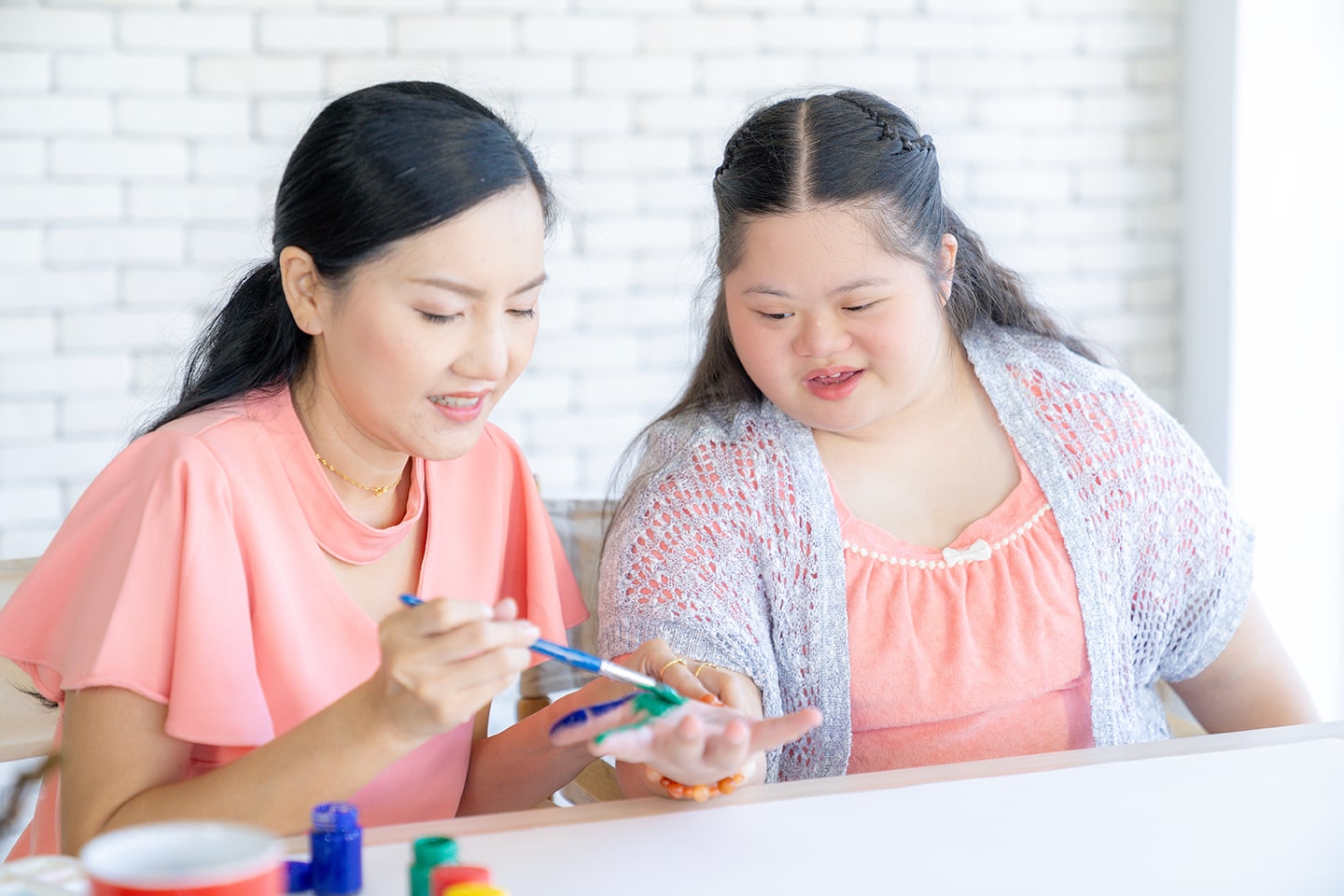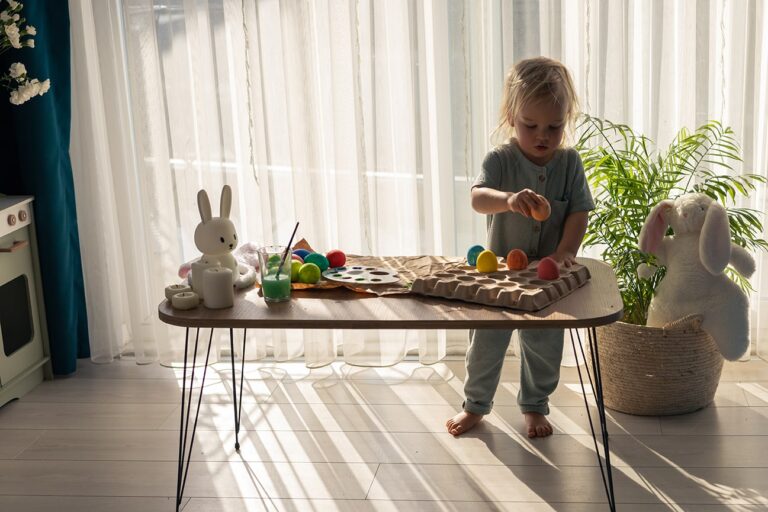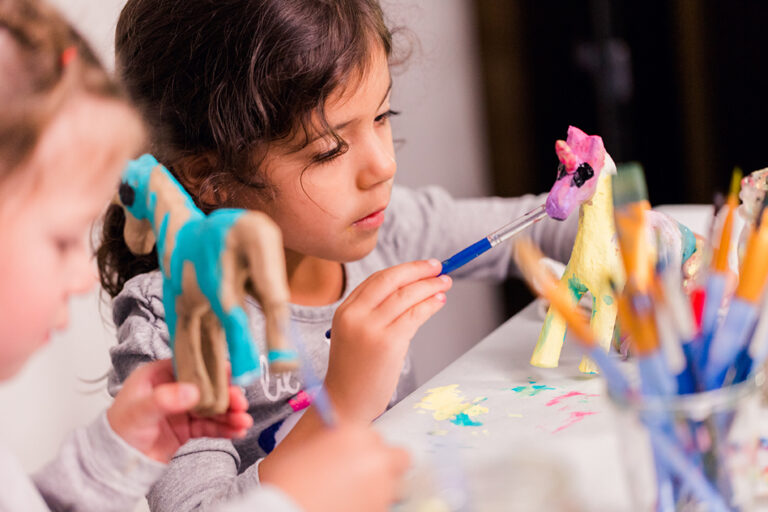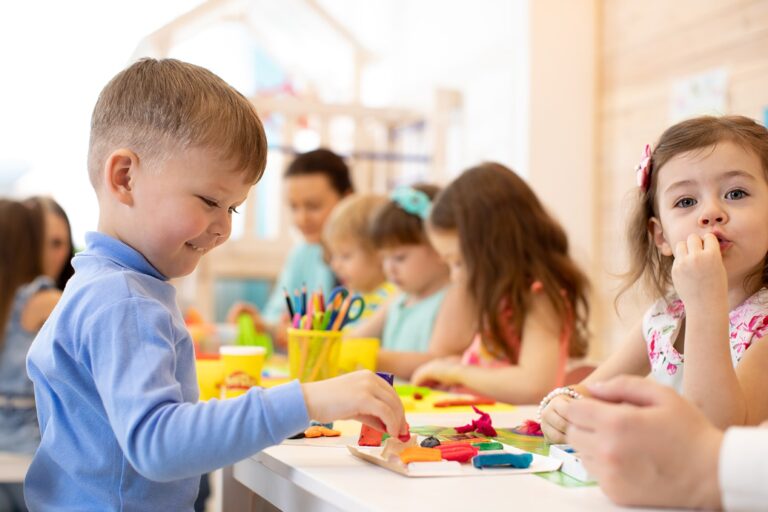Free Shipping On All Boxes!

How Crafting Helps Kids with Autism and Special Needs
Crafting is a wonderful way for children to express themselves creatively, and for children with autism and special needs, it can be particularly beneficial. Art and craft activities provide a unique opportunity for self-expression, focus, and development of various skills. Whether it’s drawing, painting, building, or other hands-on activities, crafting engages children in ways that promote emotional, cognitive, and physical growth. Here’s how crafting can help kids with autism and special needs.
1. Improves Fine Motor Skills
Crafting often requires precise movements, such as cutting with scissors, coloring, gluing, or threading beads, which helps children develop fine motor skills. For children with autism and special needs, these activities can be particularly beneficial in strengthening hand-eye coordination and dexterity. Crafting tasks can serve as a fun way to improve the motor control needed for other essential activities like writing, dressing, and eating.
Example Activity: Using large crayons or markers for drawing or using safety scissors to cut paper.
2. Enhances Focus and Concentration
Craft projects often require children to focus for extended periods, which helps them develop concentration skills. Kids with autism, in particular, may struggle with attention spans or shifting focus between activities. Crafting can be a great way to teach children how to stay engaged with a task. The structured yet creative nature of many crafting activities provides a balance between relaxation and concentration, helping kids improve their attention to detail and task completion.
Example Activity: Completing a puzzle craft or assembling a project from multiple components.
3. Encourages Emotional Expression
Crafting gives children a medium through which they can express their emotions. For children with autism or other special needs, verbal communication can sometimes be difficult. Crafts provide a non-verbal outlet for emotional expression, allowing children to represent feelings they might not be able to articulate. Whether they are creating a picture that reflects their mood or building a sculpture that represents their thoughts, crafting provides a safe and positive way for them to express themselves.
Example Activity: Using colors to represent different emotions in painting or making emotion-themed crafts.
4. Promotes Social Skills and Communication
Crafting activities often involve working in groups or pairs, which helps children develop essential social skills. Through crafting, kids can learn how to take turns, collaborate on a project, and share materials. These social skills are particularly beneficial for children with autism, as they may struggle with social interactions. Craft projects also provide an opportunity for children to communicate non-verbally, further strengthening their ability to convey ideas, thoughts, and feelings.
Example Activity: Partnering up for a group craft project, where children collaborate to create something together, learning about sharing and cooperation.
5. Provides a Sense of Accomplishment and Boosts Self-Esteem
Completing a craft project gives children a sense of achievement and can significantly boost their self-esteem. This is particularly important for children with autism or special needs, as they may face challenges in other areas of life. Crafting provides tangible results that children can feel proud of, building their confidence and self-worth. The process of starting a project, working through challenges, and finishing it helps children feel more capable and empowered.
Example Activity: Completing a craft project, like a painted rock or a beaded necklace, and displaying or gifting it to others.
6. Offers Sensory Integration and Regulation
Crafting can be a highly sensory experience, offering children with autism an opportunity to engage with different textures, colors, smells, and materials. Sensory integration activities are essential for children with sensory processing issues, which is common among children with autism. Crafting encourages sensory exploration through tactile materials like clay, fabric, glitter, and paint. This engagement can help children regulate sensory input, providing a soothing effect or enhancing their sensory awareness.
Example Activity: Playing with textured materials like modeling clay or using finger paints to explore tactile sensations.
7. Helps with Problem-Solving and Creativity
Crafting encourages creative thinking and problem-solving. Many craft activities require children to think critically about how to bring an idea to life, whether it’s figuring out how to assemble materials, deciding on colors, or finding a way to fix a mistake. This type of problem-solving helps improve cognitive flexibility and creativity. Children with autism or special needs often benefit from activities that engage their minds and challenge them to think in new ways.
Example Activity: Creating a 3D model with clay or other materials, where children need to plan how to shape and assemble their creation.
8. Encourages Independence and Life Skills
Crafting can help children with autism and special needs build independence and learn valuable life skills. Activities like following instructions, completing a project independently, and organizing materials can all foster a sense of responsibility. By encouraging children to work through the steps of a craft project on their own, parents and caregivers can help them build self-reliance while also providing opportunities for skill-building in areas like organization and time management.
Example Activity: Using our craft kits with simple, step-by-step instructions that the child can follow independently.
Crafting provides more than just a fun way to spend time—it has numerous benefits for children with autism and special needs. From improving fine motor skills to boosting self-esteem, encouraging emotional expression, and helping with sensory integration, crafting can play a significant role in a child’s overall development. By providing kids with the tools and space to create, we are helping them build the skills they need to succeed in other areas of life. Crafting is an accessible, enjoyable, and effective way to support children’s growth, and it can be adapted to meet their unique needs and preferences.
Sources
- Autism Speaks – “Therapeutic Benefits of Art and Music for Children with Autism”
https://www.autismspeaks.org - National Autistic Society – “How Sensory Issues Affect Autistic People”
https://www.autism.org.uk - The National Institute of Neurological Disorders and Stroke (NINDS) – “Fine Motor Skills”
https://www.ninds.nih.gov - The Art of Autism – “Art Therapy and Autism”
https://theartofautism.org - American Occupational Therapy Association (AOTA) – “Sensory Processing Disorder and Occupational Therapy”
https://www.aota.org - Psychology Today – “The Role of Creativity in Autism”
https://www.psychologytoday.com
By incorporating crafting into their routines, children with autism and special needs can unlock a wide range of developmental benefits while enjoying themselves in the process.



